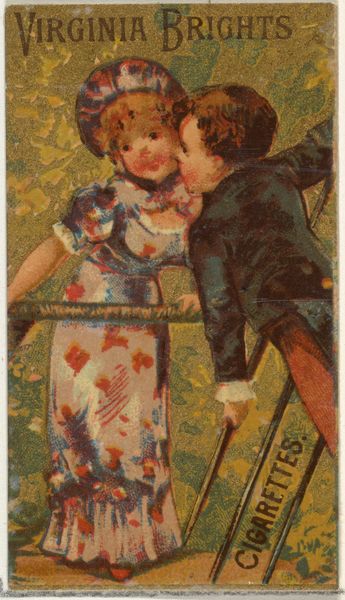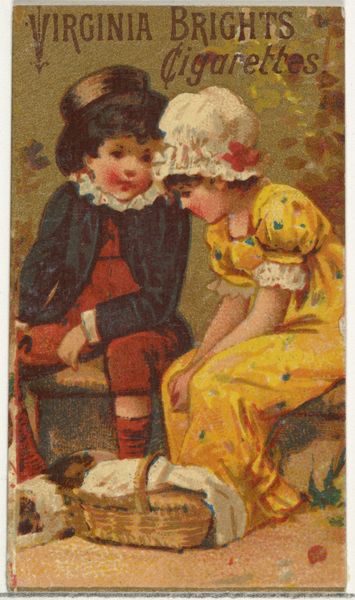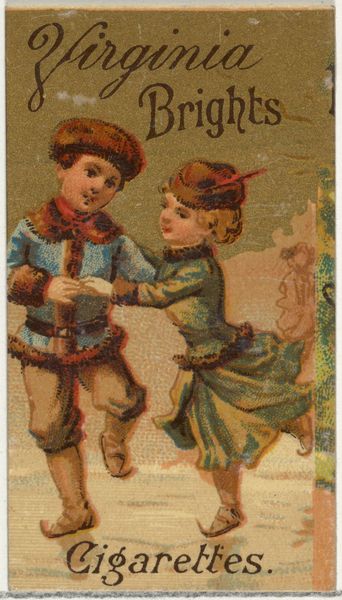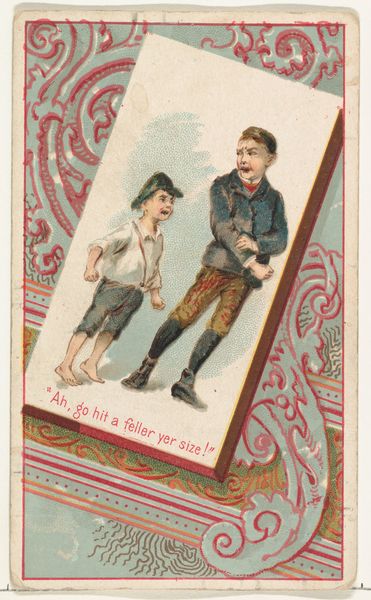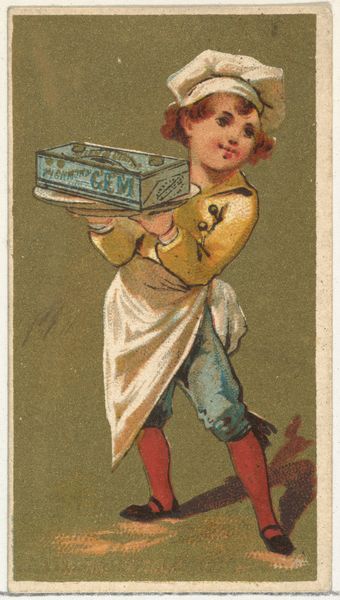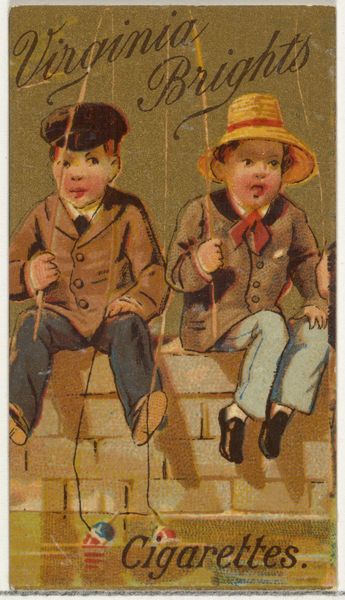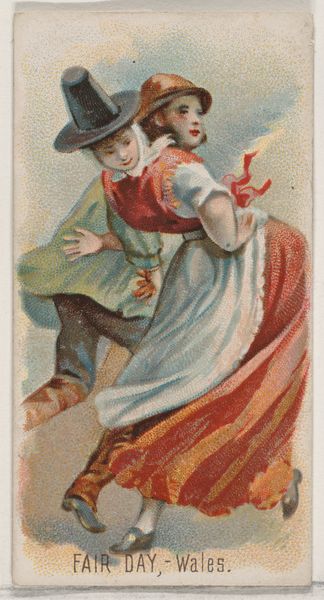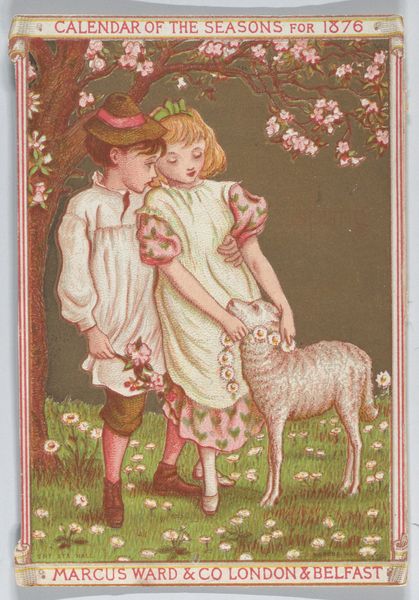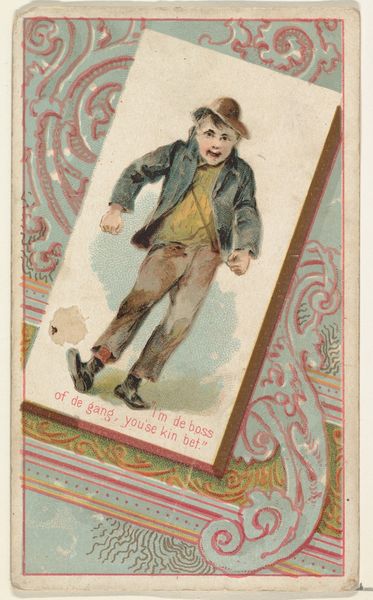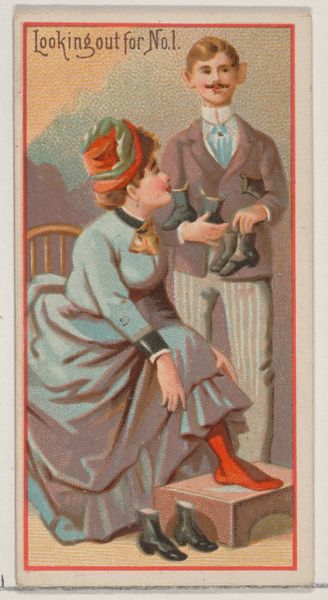
From the Girls and Children series (N64) promoting Virginia Brights Cigarettes for Allen & Ginter brand tobacco products 1886
0:00
0:00
drawing, print
#
drawing
#
girl
# print
#
boy
#
genre-painting
Dimensions: Sheet: 2 5/8 × 1 1/2 in. (6.7 × 3.8 cm)
Copyright: Public Domain
Editor: So, here we have a print from 1886 by Allen & Ginter, part of their "Girls and Children" series, promoting Virginia Brights Cigarettes. It depicts a young boy holding some sort of animal, next to a young girl. The drawing style almost has an airbrushed quality to it. What strikes me is the direct advertisement within a portrait of children... what are your thoughts about this piece? Curator: It's crucial to examine this image through the lens of its material existence. Produced as a trade card insert for cigarette packs, its function was primarily commercial. Consider the lithographic process - a relatively inexpensive method that allowed for mass production. The intended consumption was fleeting: glance, discard, or perhaps collect, indicating the relationship between commodity culture and ephemeral art forms. What does the juxtaposition of children with tobacco suggest about Victorian-era marketing and consumption? Editor: That is a good point - these were designed to be ephemeral and functional. How does that then influence their "artistic value" when viewed at a place like the Met, today? Curator: It compels us to challenge established hierarchies within art history. We should look beyond the surface aesthetic and instead, delve into the means of production and distribution, revealing connections to the working-class individuals involved in tobacco manufacturing and advertising. Think about the unseen labor, the economic structures sustaining this artwork’s existence and, ultimately, its connection to health and social issues linked to smoking. Editor: That’s fascinating, viewing it not just as an image, but as a relic of specific labor practices and promotional strategies. Curator: Exactly. These kinds of works existed in relationship with production and capitalist means. It shows that consumer culture and art history can indeed intertwine to give us more complete, nuanced histories. Editor: I learned so much from that perspective. I’ll definitely think about art in relation to material conditions moving forward.
Comments
No comments
Be the first to comment and join the conversation on the ultimate creative platform.
